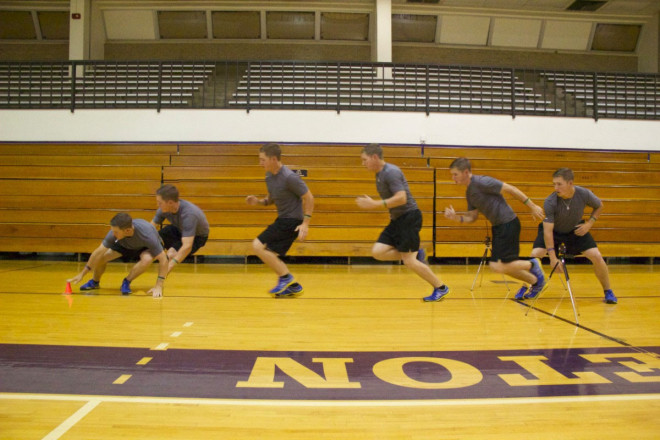
Researchers at Tarleton State University recently completed a study that examined the effectiveness of strength and conditioned protocols as they relate to the one thing all coaches care about- winning.
In the study, titled ‘Agility Measures Related to Game Performance of NCAA Baseball Pitchers,’ Andrew Wolfe, Jason Jones, Kayla Peak, Randy Martin and Joe Priest looked into the similarities between the pitching motion and the kinetic chain employed in agility tests which involve acceleration, deceleration, and change of direction.
“Strength and conditioning training is prevalent among the majority of baseball off-season, pre-season, and in-season programs,” observes Andrew Wolfe, a former player for Tarleton State. “The main reason we conducted this study was to validate our training protocol: do the workouts work? As coaches, we strive to recruit and play the most athletic individuals because they tend to produce the best results; subsequently, generating wins.”
With the understanding that the pitching motion begins with the muscles of the legs and continues progressively through the torso, shoulders, and arms, the ultimate purpose of the study was to determine pre-season agility in NCAA pitchers and to relate these measures to regular season pitching performance.
Wolfe and his colleagues examined pitchers at NCAA Division II Tarleton State, who volunteered as subjects for the study. Methods included a 60-yard agility test known as the J.J. Shuttle, which provided average speeds for four contiguous agility segments (S1, S2, S3, and S4 of 10, 10, 20, and 20 yds., respectively), as well as Total Shuttle Run (TSR), coupled with statistical measures (which included innings pitched, runs, hits, earned runs, base on balls and strikeouts) that ultimately dictated pitching ‘performance.’
The study ultimately concluded that better agility may lead to selected improvements in game performance in NCAA Division II baseball pitchers, essentially finding that pitchers who ran faster had higher per-inning strikeout rates. And while it may not be groundbreaking in nature, Wolfe is perhaps ‘cracking the code’ of how to better train baseball athletes- one pitch at a time.
“As a former collegiate coach and player, I couldn't ignore the fact that this information could drastically change the performance of a pitching staff,” he noted. “Baseball coaches and strength and conditioning coordinators are undoubtedly incorporating agility into their pre-season training. However, we believe this study validates and gives purpose to the utilization of agility training.”
A baseball man himself, Wolfe knows that simply submitting his work to scientific journals may not be the most efficient way to improve training. “Are baseball coaches and players really searching for knowledge by reading those scientific journals?” Wolfe asks, “Or are they turning to other resources that focus on practical application and proper implementation?”
“The ultimate purpose of my research is to reach out to baseball programs across the nation and hopefully improve, impact, and help their programs grow and succeed,” Wolfe adds.
Inside Pitch recently caught up with Wolfe to delve further into his findings:
Inside Pitch: Were the results what you anticipated?
Andrew Wolfe: “As researchers, we try not to anticipate our results. The nature of research is to discover the answer to an unanswered question. However, the most athletic player (or in this case pitcher) tends to surface and perform more consistently.”
IP: How do you plan to present these findings to baseball programs?
AW: “I believe agility demonstrates – and is a valid indicator of – an individual's athletic ability. For the coaching staffs and strength and conditioning coordinators, the results of the study are undoubtedly rewarding. I would assume they anticipated that the most agile/fastest athlete would out-perform fellow pitchers, and the results confirm that claim.”
IP: How did you determine the parameters necessary to conduct this study?
AW: “The agility test we used, the "JJ-Shuttle," is a remarkable assessment tool which has been utilized to examine a wide variety of sports. It provides coaches and researchers multiple precise segment time, each possessing a unique and specific anaerobic muscular challenge.”
IP: What other parameters are you considering for upcoming studies?
AW: “Personally, I plan to study the baseball population, continuing with the investigation of pitcher performance; specifically pitching velocity. Studying position players is difficult due to multiple variables associated with their performance; a hitter can do everything correct and still ‘fail.’”
“This is just one portion of the research. We have conducted studies concerning the most efficient means of increasing an athlete's agility performance and much more.”